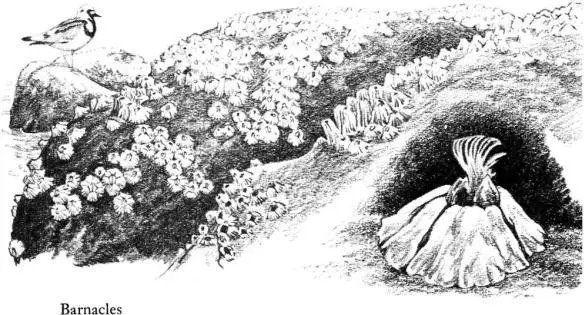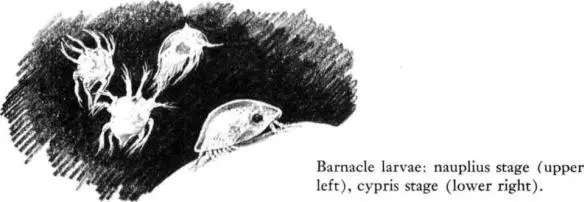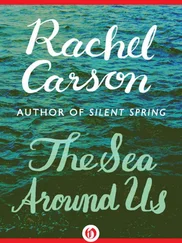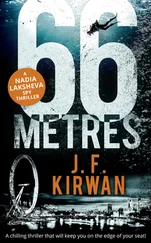Rachel Carson - The Edge of the Sea
Здесь есть возможность читать онлайн «Rachel Carson - The Edge of the Sea» весь текст электронной книги совершенно бесплатно (целиком полную версию без сокращений). В некоторых случаях можно слушать аудио, скачать через торрент в формате fb2 и присутствует краткое содержание. Город: Boston, Год выпуска: 1998, ISBN: 1998, Издательство: Mariner Books, Жанр: Биология, sci_ecology, sci_popular, на английском языке. Описание произведения, (предисловие) а так же отзывы посетителей доступны на портале библиотеки ЛибКат.
- Название:The Edge of the Sea
- Автор:
- Издательство:Mariner Books
- Жанр:
- Год:1998
- Город:Boston
- ISBN:978-0-395-07505-0
- Рейтинг книги:4 / 5. Голосов: 1
-
Избранное:Добавить в избранное
- Отзывы:
-
Ваша оценка:
- 80
- 1
- 2
- 3
- 4
- 5
The Edge of the Sea: краткое содержание, описание и аннотация
Предлагаем к чтению аннотацию, описание, краткое содержание или предисловие (зависит от того, что написал сам автор книги «The Edge of the Sea»). Если вы не нашли необходимую информацию о книге — напишите в комментариях, мы постараемся отыскать её.
A book to be read for pleasure as well as a practical identification guide,
introduces a world of teeming life where the sea meets the land. A new generation of readers is discovering why Rachel Carson’s books have become cornerstones of the environmental and conservation movements. New introduction by Sue Hubbell.
The Edge of the Sea — читать онлайн бесплатно полную книгу (весь текст) целиком
Ниже представлен текст книги, разбитый по страницам. Система сохранения места последней прочитанной страницы, позволяет с удобством читать онлайн бесплатно книгу «The Edge of the Sea», без необходимости каждый раз заново искать на чём Вы остановились. Поставьте закладку, и сможете в любой момент перейти на страницу, на которой закончили чтение.
Интервал:
Закладка:
The rough periwinkle has been found by a French experimenter to have the rhythm of the tides deeply impressed upon its behavior patterns, so that it “remembers” even when no longer exposed to the alternating rise and fall of the water. It is most active during the fortnightly visits of the spring tides to its rocks, but in the waterless intervals it becomes progressively more sluggish and its tissues undergo a certain desiccation. With the return of the spring tides the cycle is reversed. When taken into a laboratory the snails for many months reflect in their behavior the advance and retreat of the sea over their native shores.
On this exposed New England coast the most conspicuous animals of the high-tide zone are the rock or acorn barnacles, which are able to live in all but the most tumultuous surf. The rockweeds here are so stunted by wave action that they offer no competition, and so the barnacles have taken over the upper shore, except for such space as the mussels have been able to hold.
At low tide the barnacle-covered rocks seem a mineral landscape carved and sculptured into millions of little sharply pointed cones. There is no movement, no sign or suggestion of life. The stony shells, like those of mollusks, are calcareous and are secreted by the invisible animals within. Each cone-shaped shell consists of six neatly fitted plates forming an encircling ring. A covering door of four plates closes to protect the barnacle from drying when the tide has ebbed, or swings open to allow it to feed. The first ripples of incoming tide bring the petrified fields to life. Then, if one stands ankle-deep in water and observes closely, one sees tiny shadows flickering everywhere over the submerged rocks. Over each individual cone, a feathered plume is regularly thrust out and drawn back within the slightly opened portals of the central door—the rhythmic motions by which the barnacle sweeps in diatoms and other microscopic life of the returning sea.

The creature inside each shell is something like a small pinkish shrimp that lies head downward, firmly cemented to the base of this chamber it cannot leave. Only the appendages are ever exposed—six pairs of branched, slender wands, jointed and set with bristles. Acting together, they form a net of great efficiency.
The barnacle belongs to the group of arthropods known as the Crustacea, a varied horde including the lobsters, crabs, sand hoppers, brine shrimps, and water fleas. The barnacle is different from all related forms, however, in its fixed and sedentary existence. When and how it assumed such a way of life is one of the riddles of zoology, the transitional forms having been lost somewhere in the mists of the past. Some faint suggestions of a similar manner of life—the waiting in a fixed place for the sea to bring food—are found among the amphipods, another group of crustaceans. Some of these spin little webs or cocoons of natural silk and seaweed fibers; though remaining free to come and go they spend much of their time within them, taking their food from the currents. Another amphipod, a Pacific coast species, burrows into colonies of the tunicate called the sea pork, hollowing out for itself a chamber in the tough, translucent substance of its host. Lying in this excavation, it draws currents of sea water over its body and extracts the food.
However the barnacle became what it is, its larval stages clearly proclaim its crustacean ancestry, although early zoologists who looked at its hard shells labeled it a mollusk. The eggs develop inside the parent’s shell and presently hatch into the sea in milky clouds of larvae. (The British zoologist Hilary Moore, after studying barnacles on the Isle of Man, estimated a yearly production of a million million larvae from a little over half a mile of shore.) Larval life lasts about three months in the rock barnacle, with several molts and transformations of form. At first the larva, a little swimming creature called a nauplius, is indistinguishable from the larva of all other crustaceans. It is nourished by large globules of fat that not only feed it but keep it near the surface. As the fat globules dwindle, the larva begins to swim at lower water levels. Eventually it changes shape, acquires a pair of shells, six pairs of swimming legs, and a pair of antennae tipped with suckers. This “cypris” larva looks much like the adults of another group of crustaceans, the ostracods. Finally, guided by instinct to yield to gravity and to avoid light, it descends to the bottom ready to become an adult.
No one knows how many of the baby barnacles riding shoreward on the waves make a safe landing, how many fail in the quest for a clean, hard substratum. The settling down of a barnacle larva is not a haphazard process, but is performed only after a period of seeming deliberation. Biologists who have observed the act in the laboratory say the larvae “walk” about on the substratum for as long as an hour, pulling themselves along by the adhesive tips of the antennae, testing and rejecting many possible sites before they make a final choice. In nature they probably drift along in the currents for many days, coming down, examining the bottom at hand, then drifting on to another.

What are the conditions this infant creature requires? Probably it finds rock surfaces that are rough and pitted better than very smooth ones; probably it is repelled by a slimy film of microscopic plants, or even sometimes by the presence of hydroids or large algae. There is some reason to believe it may be drawn to existing colonies of barnacles perhaps through mysterious chemical attraction, detecting substances released by the adults and following these paths to the colony. Somehow, suddenly and irrevocably, the choice is made and the young barnacle cements itself to the chosen surface. Its tissues undergo a complete and drastic reorganization comparable to the metamorphosis of the larval butterfly. Then from an almost shapeless mass, the rudiments of the shell appear, the head and appendages are molded, and within twelve hours the complete cone of the shell, with all its plates delineated, has been formed.
Within its cup of lime the barnacle faces a dual growth problem. As a crustacean enclosed in a chitinous shell, the animal itself must periodically shed its unyielding skin so that its body may enlarge. Difficult as it seems, this feat is successfully accomplished, as I am reminded many times each summer. Almost every container of sea water that I bring up from the shore is flecked with white semitransparent objects, gossamer-fine, like the discarded garments of some very small fairy creature. Seen under the microscope, every detail of structure is perfectly represented. Evidently the barnacle accomplishes its withdrawal from the old skin with incredible neatness and thoroughness. In the little cellophane-like replicas I can count the joints of the appendages; even the bristles, growing at the bases of the joints, seem to have been slipped intact out of their casings.
The second problem is that of enlarging the hard cone to accommodate the growing body. Just how this is done no one seems to be sure, but probably there is some chemical secretion to dissolve the inner layers of the shell as new material is added on the outside.
Unless its life is prematurely ended by an enemy, a rock barnacle is likely to live about three years in the middle and lower tidal zones, or five years near the upper tidal levels. It can withstand high temperatures as rocks absorb the heat of the summer sun. Winter cold in itself is not harmful, but grinding ice may scrape the rocks clean. The pounding of the surf is part of the normal life of a barnacle; the sea is not its enemy.
Читать дальшеИнтервал:
Закладка:
Похожие книги на «The Edge of the Sea»
Представляем Вашему вниманию похожие книги на «The Edge of the Sea» списком для выбора. Мы отобрали схожую по названию и смыслу литературу в надежде предоставить читателям больше вариантов отыскать новые, интересные, ещё непрочитанные произведения.
Обсуждение, отзывы о книге «The Edge of the Sea» и просто собственные мнения читателей. Оставьте ваши комментарии, напишите, что Вы думаете о произведении, его смысле или главных героях. Укажите что конкретно понравилось, а что нет, и почему Вы так считаете.












